Last Updated on August 14, 2024
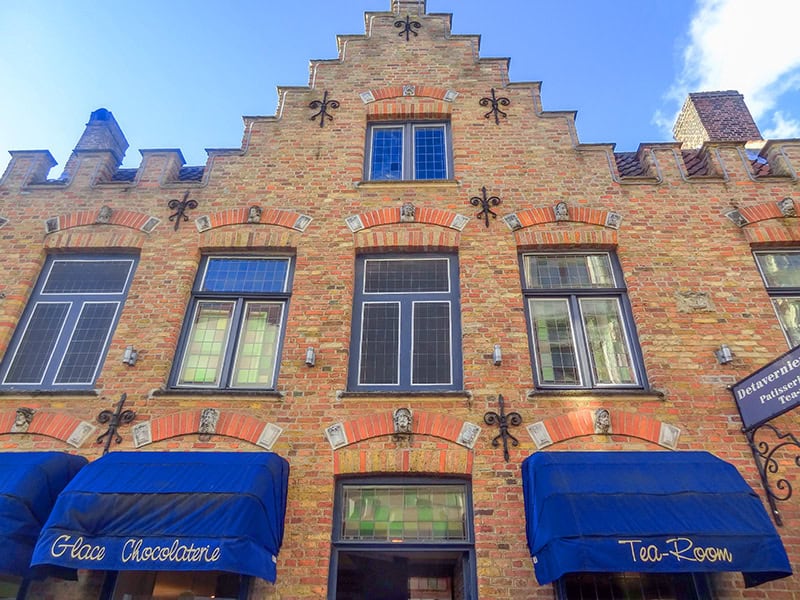
Estimated reading time: 9 minutes
By Jim Ferri
The best time to visit many European cities is during the off-season. It’s then when there are fewer tourists, the cultural season is in full swing, and prices tend to drop with the temperature.
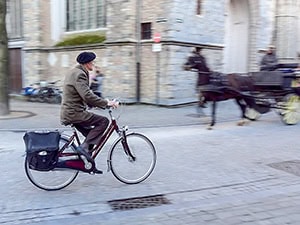
So, when is the best time to visit Bruges? It’s also the off-season since it’s exceptionally beautiful and small, which makes it more enjoyable than other European destinations in the off-season.
Oddly enough, these two things also make it so crowded in the summer. But when you visit in the off-season, Bruges feels much more intimate. And without the crowds, you can linger in its museums and restaurants.
But best of all, Bruges is a very easy day trip from Brussels (only one hour by train / $11-16).
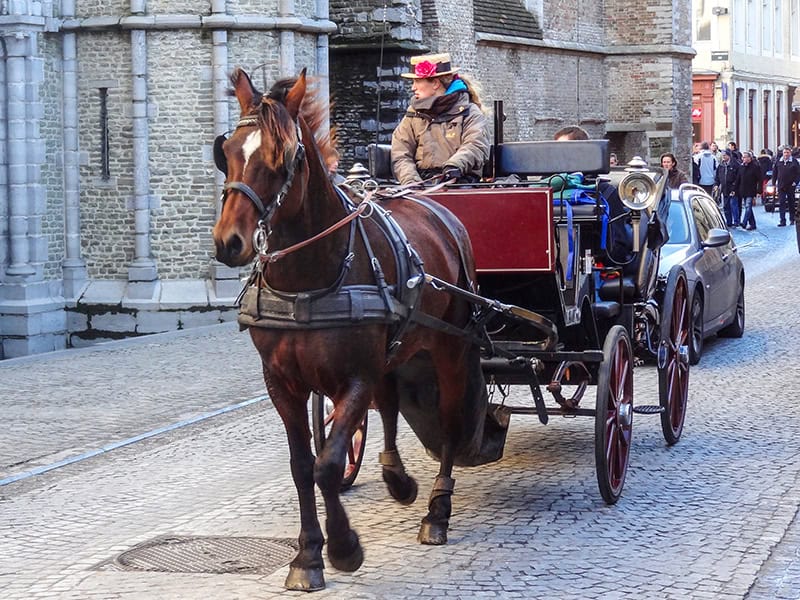
When Bruges Goes From Crowded to Cozy
Bruges is most popular and crowded from June through October (the “high season”) and in mid-March through May is its “shoulder” season. November through early March is the “off-season”, which is the best time to visit Bruges to avoid the crowds and have a more comfortable vacation. However, remember that Bruges can get damp any time of year, so dress appropriately. I visited in early November – which I consider the very best time to visit Bruges – and enjoyed excellent weather.
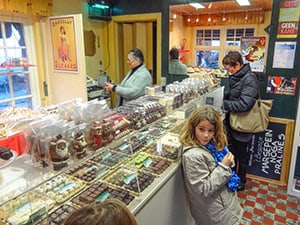
In the “shoulder” and “off” seasons, when there’s a bit of a nip in the air, Bruges turns from crowded to cozy. And all that medieval architecture accentuates the city’s intimacy and romantic nature. That gorgeous architecture is one of the reasons Bruges is a UNESCO World Heritage site.
In the off-season, everything in Bruges feels more authentic. I feel more like a local—sometimes even a local from another century—as I take in that glorious architecture around me.
There’s much to be said for snuggling under a blanket in a horse-drawn carriage as you clip-clop along one of Bruges’s cobbled medieval lanes. Also good for escaping the winter wind are Bruges’ crowded, centuries-old bars. Go there to linger over a glass of beer, wine, or genever, the Flemish warm gin.
You’ll also find that when tucked away in one of Bruges’ old candle-lit restaurants, even the food tastes better on a cold, rainy evening. And there are plenty of good restaurants in Bruges.
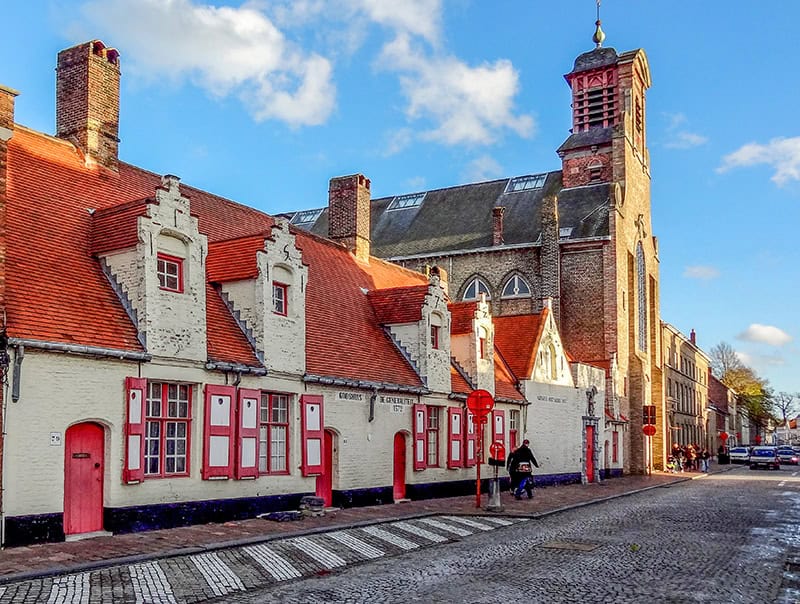
Enjoy Chocolate and Unspoiled Medieval Architecture
The city’s reputation for unspoiled beauty is right up there with its reputation for wonderful chocolate, which you can enjoy without the crowds in the off-season, even in September.
During the 14th–16th centuries, Bruges was one of northern Europe’s most sophisticated cities. Merchants built beautiful mansions, churches, and extravagant civic buildings. Most are still intact since the city thankfully escaped damage in both world wars.
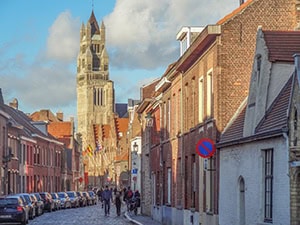
And it’s not an exaggeration to say the city has an overabundance of medieval architecture. In fact, you find stepped gables and craggy spires jutting up just about everywhere you look. You see them, especially throughout the old, historic city center, which is eminently walkable and virtually car-less.
Swan-dotted canals also cross the center here and there, emphasizing its romantic nature. Also crossing it are warrens of medieval lanes, which, like the canals, are lined with mansions. Wander them, and you’ll stumble across some of the most picturesque places and houses you’ll see anywhere.
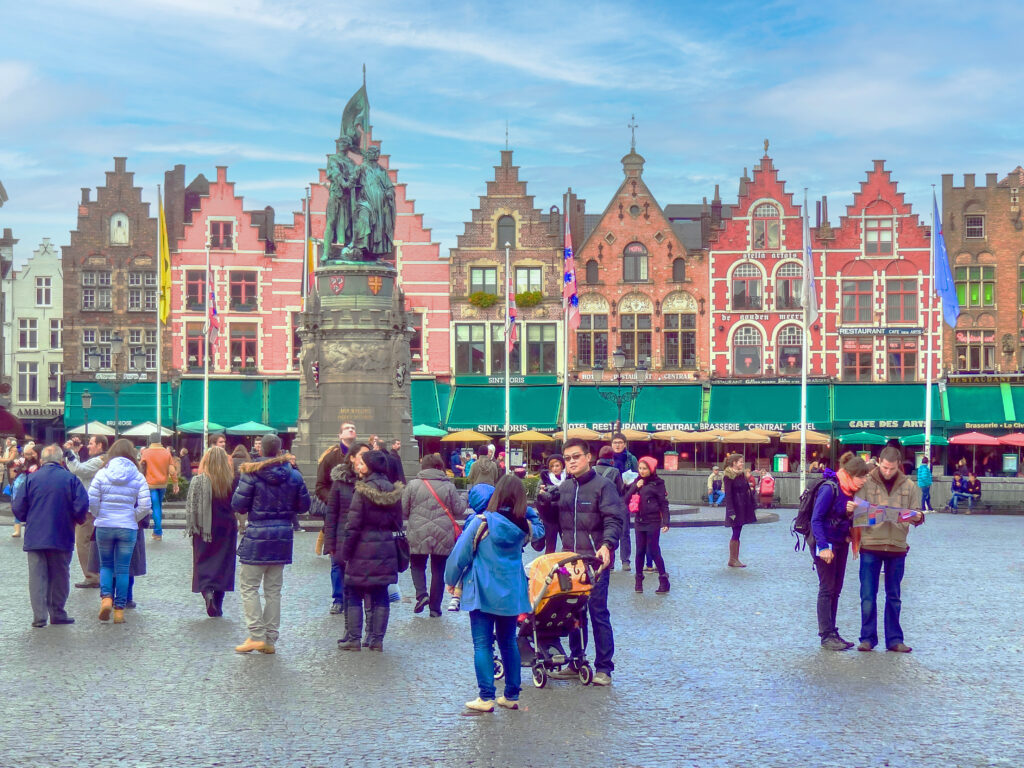
Start At the Markt
The city’s medieval 13th-century Markt (market) spreads below the Belfry, a 13th-century tower where Bruge’s medieval charter of rights was held. It’s the perfect place to start a tour of the city.
It’s a large square, almost 2.5 acres in size, surrounding a statue that celebrates Jan Breydel and Pieter de Coninck, 14th-century local heroes who resisted French oppression. Around it loom step-gabled medieval buildings and old guild houses, now the homes of pricey pubs and restaurants.
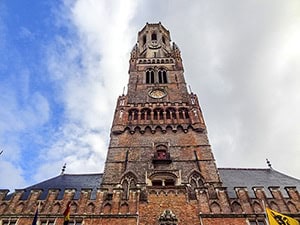
The 272-foot-tall Belfort is part of a 13th-century complex of halls that served as a warehouse and a market hall in the Middle Ages. It contains a carillon with 47 bells and the old city Treasury. If you want to work off some chocolates, climb the 366 steps to its top. You’ll be rewarded with a panoramic view of the city. There’s also an art gallery at the base of the building.
Afterward, whether you’ve arrived in Bruges during the best time to visit the city or not, stop at a café to people-watch, hire a horse-drawn carriage to take you about, or wander five minutes over to the Dijver canal near the Groeningemuseum to poke about the sidewalk antique market.
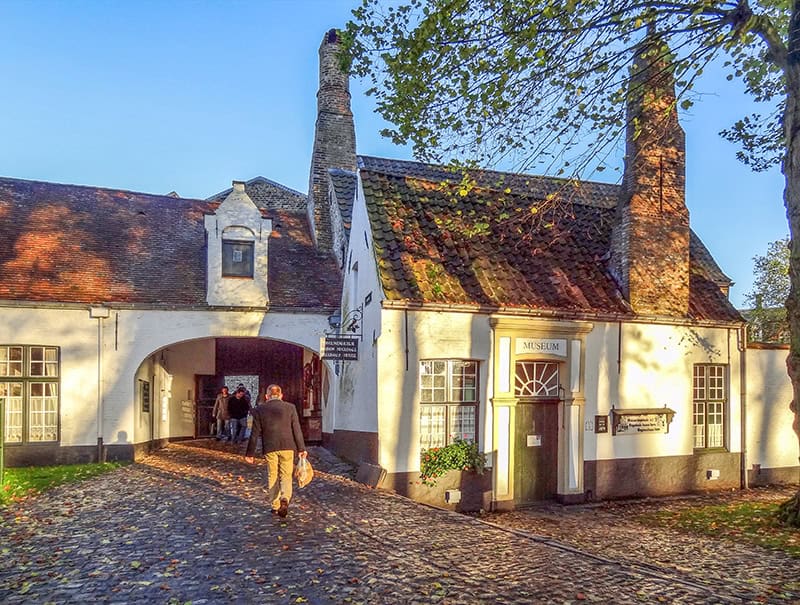
The Begijnhof, More Serene During the Off-Season
The Begijnhof is only about a 15-minute walk from Market Square. Officially known as Prinselijk Begijnhof ten Wijngaarde, it is a ring of tiny whitewashed houses in a park-like setting.
This serene place, beautiful any time of year, was once the home of Beguines, the girls and widows from various social backgrounds who devoted themselves to charitable work beginning in 1245 after the Countess of Flanders founded it.

Today, the Begijnhof is home to the sisters of the Order of Saint Benedict (who still wear the Beguine habit), and visitors are requested to respect their vow of silence. If you take a horse-and-carriage ride around Bruges, your driver will likely make a 10-minute stop here, long enough for you to cross the small entrance bridge for a quick look around. You’ll find the Bruges Begijnhof beautiful in the off-season in spring and on a brisk autumn afternoon.
Exit the Begijnhof at the small bridge over the Minnewater Canal, and you’ll find a group of cafés on Wijngaardplein, all perfect for a warm tea, coffee, or something more robust.
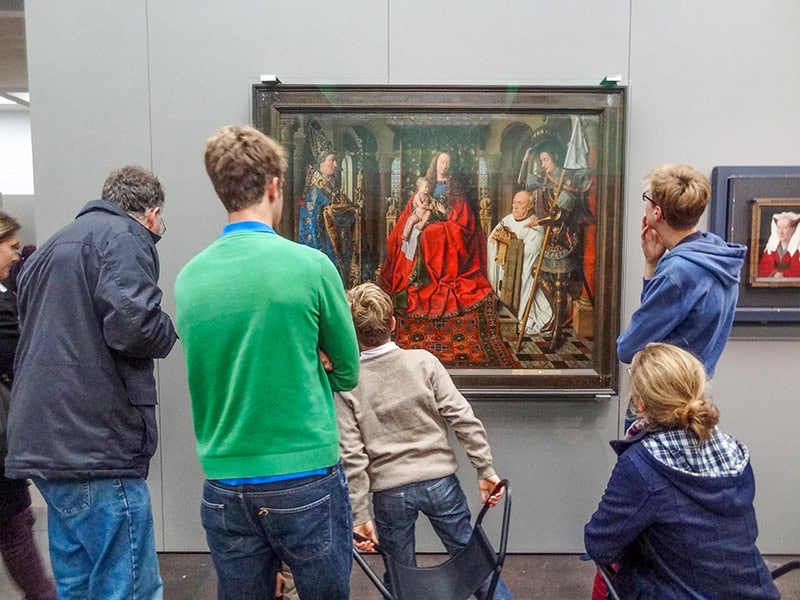
Groeningemuseum (Groeninge Museum)
While Bruges itself is a work of art, also visit some of the city’s renowned art museums, which, as said, are better experienced in the off-season. At the top of my list is the Groeningemuseum, Bruges’ famous 11-room art gallery. During the off-season, you’ll almost have the place to yourself.
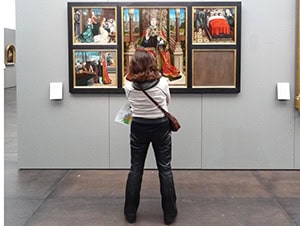
It’s only a fraction of the size of some art museums in Brussels and Antwerp. Still, it’s a fantastic gallery that houses Belgium’s finest collection of works by the Flemish Primitives, including Jan van Eyck, Hans Memling, Rogier van der Weyden, Hugo van der Goes, and Gerard David.
The Groeninge also contains top 18th—and 19th-century neoclassical pieces, masterpieces from Flemish Expressionism, and post-war modern art.
You may also enjoy: Traveling in Belgium – the Best Places to See / In Search of the Best Belgian Chocolate in Bruges / 7 Great Things to Do In Bruges, Belgium
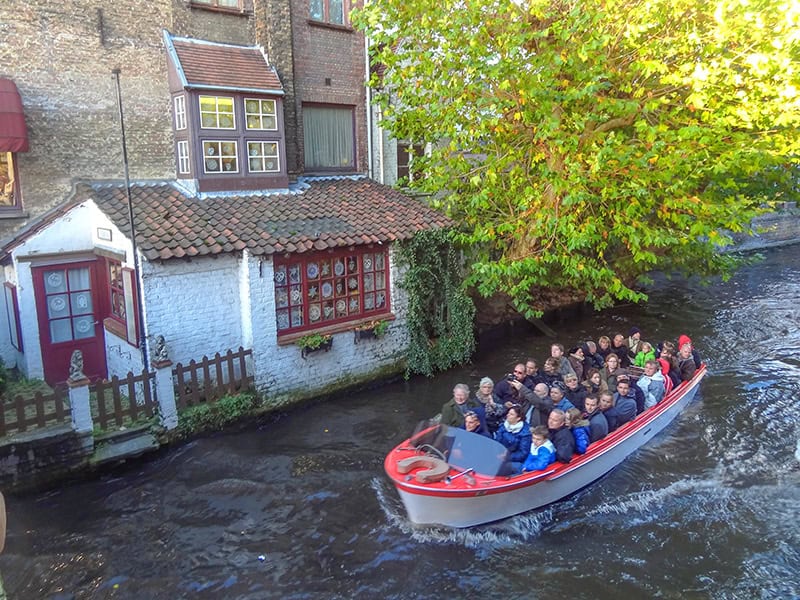
Canal Tours
Canal tours run throughout the year, not just during the warmer months. Although they may seem touristy, which they are, they are an excellent way to see the city from a different perspective in any season.
However, be aware that just as you can get hot on a hot summer day on a canal tour, you can also get chilly on a cold winter one. Still, they’re fun – just dress appropriately.

I love your story. It’s written so well and some of the details remind me of a trip there long ago with my father and namesake Carl and how we enjoyed some of the things you wrote about. We longed to do the carriage ride, but found too many other things you see and do! Thanks for the good memory and additional interesting material.
I’m glad you enjoyed it Carla.
Could you clarify which months you mean by off-season? It used to be any non-summer months, but that seems to be changing as more baby boomers retire. We’ve found crowds in October last year.
Hi Debra,
You’re absolutely right about the changing nature of “off-season”. Autumn and Spring have become heavy travel seasons in many destinations. What I mean by off-season in many places (including Bruges) are the cold months. In Europe that would generally be mid-Novemeber to late March. That doesn’t include the ski resorts, of course, since that would be their high season. Jim
Hi Jim,
We will be in Ghent on a Saturday, Sunday and Monday at the end of April. We want to this Bruge, explore Ghent and tour Flanders and the WW1 sites. It appears that some places we would want to visit might be closed on some of those days. Do you have a recommendation on when to go where?
Thanks
Sherry
Hi Sherry,
That’s a wonderful time to visit. I would email the Flanders tourist office and also the Bruges and Ghent tourist offices. They will be able to supply you with the most up-to-date info and also make other recommendations. I’m sorry I can’t be of more help re: places that are open or closed on specific dates.
Jim